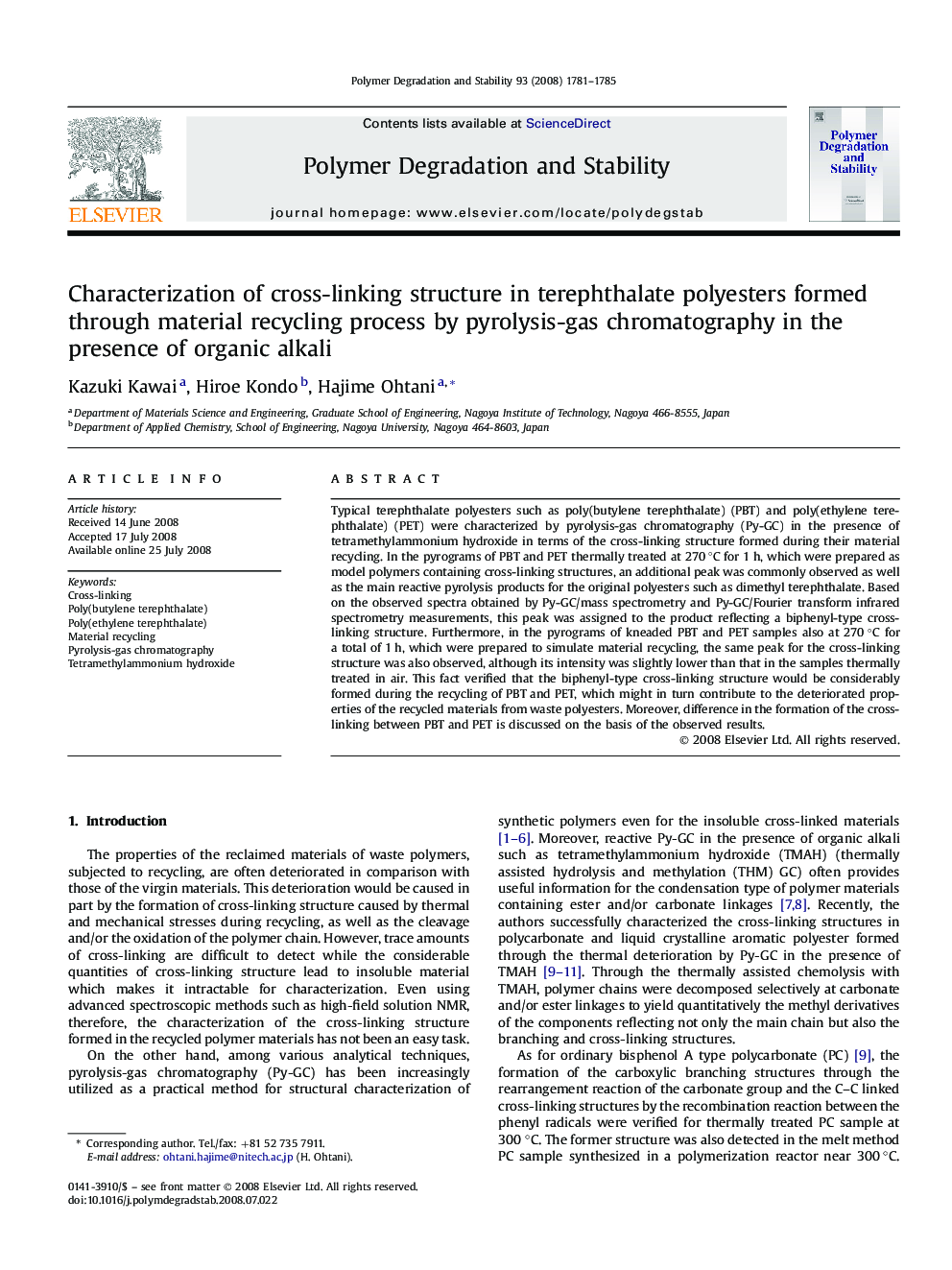| Article ID | Journal | Published Year | Pages | File Type |
|---|---|---|---|---|
| 5203461 | Polymer Degradation and Stability | 2008 | 5 Pages |
Typical terephthalate polyesters such as poly(butylene terephthalate) (PBT) and poly(ethylene terephthalate) (PET) were characterized by pyrolysis-gas chromatography (Py-GC) in the presence of tetramethylammonium hydroxide in terms of the cross-linking structure formed during their material recycling. In the pyrograms of PBT and PET thermally treated at 270 °C for 1 h, which were prepared as model polymers containing cross-linking structures, an additional peak was commonly observed as well as the main reactive pyrolysis products for the original polyesters such as dimethyl terephthalate. Based on the observed spectra obtained by Py-GC/mass spectrometry and Py-GC/Fourier transform infrared spectrometry measurements, this peak was assigned to the product reflecting a biphenyl-type cross-linking structure. Furthermore, in the pyrograms of kneaded PBT and PET samples also at 270 °C for a total of 1 h, which were prepared to simulate material recycling, the same peak for the cross-linking structure was also observed, although its intensity was slightly lower than that in the samples thermally treated in air. This fact verified that the biphenyl-type cross-linking structure would be considerably formed during the recycling of PBT and PET, which might in turn contribute to the deteriorated properties of the recycled materials from waste polyesters. Moreover, difference in the formation of the cross-linking between PBT and PET is discussed on the basis of the observed results.
